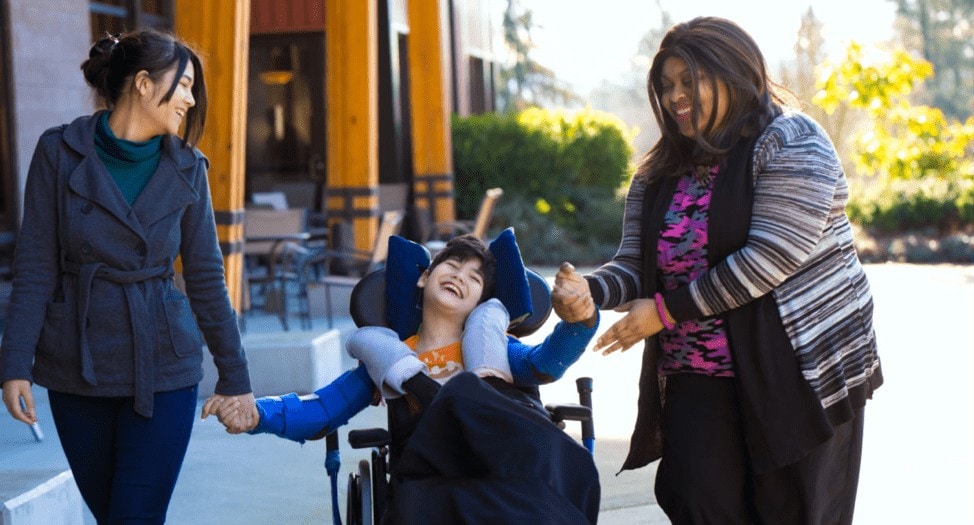


A Guest Post from Dr. Kevin L. Gyoerkoe — a licensed psychologist specializing in anxiety and OCD-related disorders at The Anxiety and OCD Treatment Center in Charlotte, NC.
When I first started working with 12 year-old Sarah*, she was the picture of anxiety. Sticking close to her mom, her hair covering her face, she sat in the waiting room as I came out to say hello. She muttered a “hi”, and we walked back to my office.
We talked for a few minutes about movies, then–knowing her parents had brought her to my office because of her anxiety about grades–I asked her about school.
Sarah burst into tears as she described just how anxious she felt.
“I feel like I have to be perfect; I have to make straight A’s”, she told me. “I don’t know when to stop, I study all the time. It takes me so much longer to finish my homework than my friends. And if I get a B or worse, I freak out.”
Toward the end of our meeting, I asked Sarah’s mom to come into my office. Her mom was calm and relaxed, the exact opposite of Sarah.
She smiled easily and sat comfortably on the couch. She seemed genuinely puzzled by Sarah’s worries about school and anxiety about her grades.
“We don’t know where she gets it”, Sarah’s mom explained. “We never put any pressure on her to get good grades. All that we ask is that she do her best.”
As a psychologist who specializes in treating anxiety, I’ve witnessed this scene play out many times over the past 13 years.
At first, when I met with patients like Sarah, I expected that their parents would be hard-driving, achievement-oriented moms and dads who demanded perfection and straight A’s.
The first few times parents like Sarah’s mom breezed into my office more relaxed and low-key than most, I thought it was a fluke.
Over time, however, a predictable pattern emerged. These relaxed parents, it seemed, often shared the same approach when parenting their children: all we ask is that you just do your best.
As this pattern appeared, I started to wonder: Could the innocent-sounding, low-key, “just do your best” approach actually make a child feel more anxious?
As I considered this paradox, it occurred to me that there were three key reasons why telling someone to do their best could actually increase anxiety.
3 Reasons Why “Do Your Best” Increases a Child’s Anxiety
It Creates Uncertainty
One problem with the well-intentioned “do your best” is that it’s simply too vague. How do we know when we’ve done our best? There’s no way to measure that goal or track our progress, so we are left in a state of uncertainty.
Uncertainty Creates Anxiety
Uncertainty is a common cause of anxiety. Often, the more unsure we are about something, the more anxious we feel about it.
It Can Cause Us to Personalize Negative Events
When negative events occur, it’s natural to try to explain why. If we’re instructed to just do our best on a task, and we don’t do well, we are likely to blame ourselves and conclude that we are inadequate or incompetent in some way. This creates a sense of defeat and hopelessness, which could lead to less effort and resilience in the future.
So if “do your best” might not actually help our children do their best, what can we do instead? The next time your child feels anxious about school, try these three alternatives to “Do Your Best.”
3 Ways to Help Reduce Your Child’s Anxiety about School
Be Specific
Instead of the vague “do your best,” help your child set clear, concrete goals to lessen anxiety and develop good work habits.
For example, you might suggest that your child take three mock spelling tests before her weekly spelling quiz. Or you could encourage her to practice multiplication flash cards until she can do them with 100% accuracy.
Being specific on the steps required to do well allows our children to shift their focus away from the outcome and focus on the process instead.
Focus on Mastery
Paradoxically, you can lessen your child’s anxiety and improve school performance by encouraging focus on mastery of specific aspects of the material.
For example, if your child struggles in math, it may take a few minutes of practice to master the multiplication tables for the week. If he needs additional support, break it down into even smaller chunks so “mastery” comes with even less effort and pressure.
Once he’s achieved this goal–or at least made progress toward the goal–consider it mission accomplished and provide lots of encouragement on the effort he put forth to accomplish that goal.
Problem-Solve
If your child receives a low grade, instead of asking “Did you do your best?” ask “What do you need to do better next time?”
Consider it a learning experience and review the material with your child.
What does your child need to brush up on? Evaluate study habits as well. Did she practice regularly? Was all the homework complete? Look beyond just the grades themselves and evaluate your child’s work habits. Do they need to improve?
Remember, all the effort in the world won’t overcome bad habits. By the same token, a few small shifts in work habits can make effort much more efficient.
The next time your child is struggling with anxiety about school, instead of offering a “just do your best” consider using the steps above to reduce anxiety, build self-confidence, and develop invaluable skills for the future. Your child will build concrete tools to ensure life-long success and feel less anxious in the process.
Final Thoughts from Amy
We are so grateful to learn from Dr. Goerkoe and know that anxiety plagues even the most devoted Positive Parenting Solutions homes.
One of the most important things families can do to ward off anxious feelings is to maintain a calm, consistent, and compassionate home.
But trust me, if you’re like the thousands of parents I’ve worked with, it’s incredibly difficult to create this type of environment when you’re inundated with sibling rivalry battles and other frustrating behaviors.
If you feel like you’ve exhausted all discipline options without much success, I’d love for you to JOIN ME FOR A FREE ONLINE CLASS.
In one hour, I’ll teach you how to get your kids to listen without nagging, yelling, or losing control.
Will you join me?!
*Sarah is a fictional patient created to represent a composite of many children with similar problems.
About the Author
Dr. Kevin L. Gyoerkoe is a licensed psychologist specializing in anxiety and OCD-related disorders at the The Anxiety and OCD Treatment Center in Charlotte, NC. To learn more about helping your child overcome anxiety, visit www.anxietyandocdtreatmentcenter.com.















